Bipan Chandra Summary: The Fight to Secure Press Freedom | PSIR Optional for UPSC PDF Download
The Freedom of the Press in the 19th Century
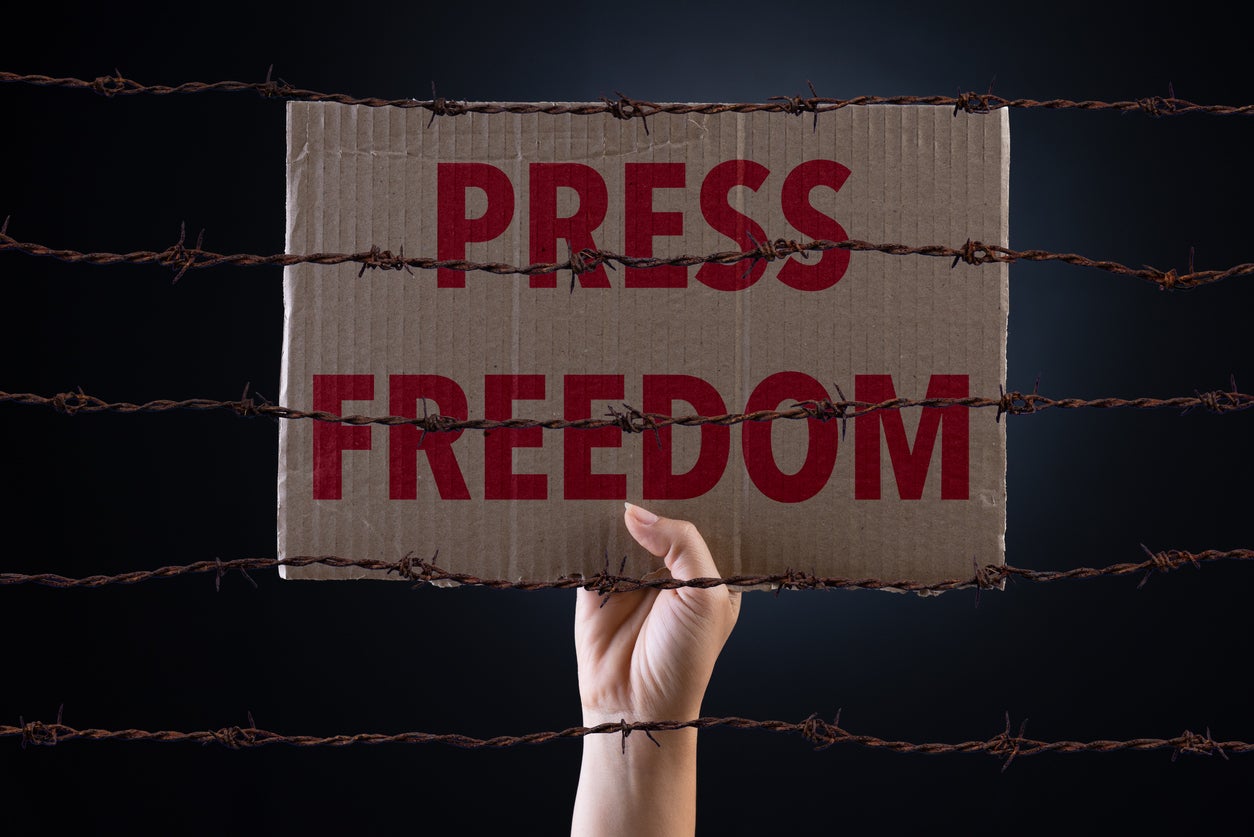
- Starting from the early 19th century, Indians who were politically aware began to show interest in modern civil rights, particularly the freedom of the Press.
- In 1824, Raja Rammohan Roy raised his voice against a regulation that restricted the freedom of the Press.
- He believed that a good ruler should provide people with easy ways to bring important issues to their attention that may require intervention.
- To achieve this, he argued that unrestricted publication was the most effective means.
The Press from 1870 to 1918
- During this time, the national movement was not yet involved in mass agitation through numerous meetings.
- Political efforts were mainly focused on:
- Politicising the public
- Spreading political propaganda
- Educating the public on nationalist ideology
- The Press played a crucial role in:
- Arousing
- Training
- Mobilising
- Consolidating nationalist public opinion
- The National Congress primarily operated through the Press during this period, as it did not have its own organisation for political work.
- Around one-third of the founding members of the Congress in 1885 were journalists.
Prominent Newspapers and Journalists
- Influential newspapers emerged during this period, edited by prominent journalists:
- The Hindu and Swadesamitran by G. Subramaniya Iyer
- Kesari and Mahratta by B.G. Tilak
- Bengalee by Surendranath Banerjea
- Amrita Bazar Patrika by Sisir Kumar Ghosh and Motilal Ghosh
- Sudharak by G.K. Gokhale
- Indian Mirror by N.N. Sen
- Voice of India by Dadabhai Naoroji
- Hindustani and Advocate by G.P. Varma
- Tribune and Akhbar-i-Am in Punjab
- Indu Prakash, Dnyan Prakash, Kal, and Gujarati in Bombay
- Som Prakash, Banganivasi, and Sadharani in Bengal
- Almost every major political leader in India was associated with a newspaper in some way.
The Press's Influence Beyond Urban Areas
- The impact of the Press reached beyond its literate audience and was not confined to cities.
- Newspapers penetrated remote villages, where a reader would share news with others.
- Library movements began to form around individual newspapers, often with minimal resources.
- Every piece of news or editorial was read or discussed, making newspapers essential for political education.
- Reading and discussing newspapers became a means for people to engage in politics.
Nature of Newspapers and Journalists
- During this period, newspapers were not viewed as businesses, nor were journalists considered professionals.
- Publications were established as a service to the nation and were often financed through philanthropy.
- Being a journalist meant being a political activist, often at considerable personal expense.
- Starting a newspaper was not very expensive; however, editors frequently had to subsist on very little.
- The Amrita Bazar Patrika was founded in 1868 with printing equipment purchased for Rs. 32.
- Surendranath Banerjea acquired the Bengalee in 1879 for Rs. 10 and the press for Rs. 1600.
Political Engagement through the Press
- Many important political discussions of the time took place in the Press.
- The Press acted as a check on the Government, scrutinising its actions and policies.
- The principle of 'Oppose, oppose, oppose' became a guiding motto for the Indian Press.
- Lord Dufferin, the Viceroy, observed in March 1886 that many intelligent individuals expressed their discontent with the British through powerful articles.
- By May, he noted that reading these papers likely instilled a strong belief among readers that they were perceived as enemies of humanity and India.
To Arouse Political Consciousness and Inculcate Nationalism
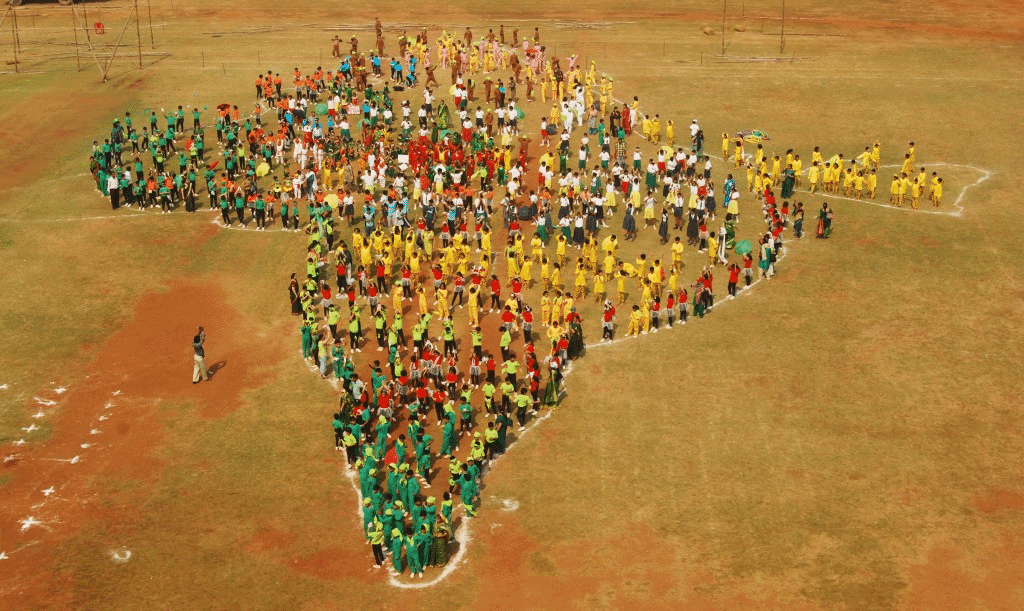
- Under Section 124A of the Indian Penal Code, exposing colonial rule and promoting disloyalty was difficult.
- This section imposed severe penalties for creating disaffection towards the government, including life transportation or imprisonment for up to three years.
- The law was later reinforced with stricter measures.
- Indian journalists adopted clever tactics and developed a unique writing style to avoid legal consequences.
- They often started critical articles with expressions of loyalty to the government and the Queen.
- Journalists shared anti-imperialist views from British socialist and Irish newspapers, knowing the Indian Government couldn't act against them without implicating the British authors.
- They published extracts from British newspapers without credit, prompting the British-Indian administration to consider actions that would be abandoned upon discovering the source.
- Radical writing often took the form of advice or warnings to the government, presented as if from a concerned friend.
- Some bold writers used irony, sarcasm, and mock seriousness to convey their messages.
India’s Struggle for Independence
- Nationalist journalists had the challenging task of blending simplicity with subtlety.
- S implicity was essential for educating a semi-literate audience, while subtlety was necessary to convey true meanings without violating the law.
- They excelled in this, often enhancing the languages they used, including English.
- The national movement robustly defended press freedom whenever it was threatened by government actions.
- The struggle for a free press became a crucial part of the broader fight for independence.
Indian Newspapers in the 1870s
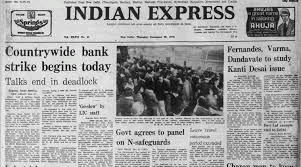
- Indian newspapers gained confidence in the 1870s and became critical of Lord Lytton's administration, particularly its harsh treatment of famine victims in 1876-77.
- In response, the government targeted Indian language newspapers, leading to the Vernacular Press Act of 1878.
- This Act, aimed at Indian language newspapers but impacting press freedom overall, allowed the government to seize printing presses and materials of newspapers deemed seditious.
- Indian nationalist sentiment strongly opposed this Act, with public demonstrations, especially in Calcutta, leading to its repeal in 1881 by Lord Ripon.
- Indian newspapers, like the Amrita Bazar Patrika, cleverly resisted these measures.
- The Amrita Bazar Patrika, targeted by the Act, outsmarted officials by converting to an English publication overnight.
Introduction of a New Newspaper

- In 1905, a notable achievement in journalism took place.
- During his Convocation Address at Calcutta University, Lord Curzon, the Viceroy, asserted that the highest ideal of truth was primarily a Western concept.
- He suggested that truth was a fundamental aspect of Western moral codes before being recognized in the East, implying that the British had introduced this lofty idea of truth to Indians.
- Amrita Bazar Patrika, a prominent newspaper, featured Curzon's speech on its front page the following day.
- The newspaper also highlighted a passage from Curzon's book, The Problems of the East, where he confessed to lying during a visit to Korea.
- Curzon recounted how he misled the President of the Korean Foreign Office about his age, believing that respect in the East is associated with age.
- He attributed his youthful appearance to the pleasant climate of Korea.
- Curzon also shared an anecdote about his encounter with the Korean President, where he initially denied being a relative of Queen Victoria but later made an unscrupulous suggestion to regain the President's favor.
- The people of Bengal found amusement in Curzon's discomfort, as he had insulted an entire community and enjoyed lecturing Indians.
- The incident also elicited laughter from the Weekly Times in London, which commented on Curzon's evolving admiration for truth, suggesting it was influenced by his American wife and was a distinctly Yankee quality.
Surendranath Banerjea
Surendranath Banerjea, a prominent figure in the Indian national movement, was the first Indian journalist to face imprisonment for his work. The Calcutta High Court, presided over by Justice Norris, dealt with a case concerning a family idol, a saligram. To ascertain the idol's age, Norris ordered its presence in court and claimed it could not be a hundred years old, which deeply offended Bengali Hindus.
In response, Banerjea wrote a powerful editorial in the Bengalee on April 2, 1883, likening Norris to infamous judges Jeffreys and Seroggs. He criticized Norris for being unworthy of his esteemed position and called for public action to curb the reckless behaviour of this young Dispenser of Justice.
Consequently, the High Court summoned Banerjea for contempt before a bench of five judges, four of whom were Europeans. The Indian judge, Romesh Chandra Mitra, dissented, but the bench convicted Banerjea, sentencing him to two months in prison.
The public reaction was swift and intense. A spontaneous hartal erupted in the Indian part of Calcutta, and students protested outside the courts, smashing windows and throwing stones at the police. Among the demonstrators was Asutosh Mukherjea, who later became a well-known Vice Chancellor of Calcutta University. Protests spread across Calcutta and to various other towns in Bengal, as well as to cities like Lahore, Amritsar, Agra, Faizabad, and Poona.
For the first time, large open-air meetings were held in Calcutta to express public discontent.
Bal Gangadhar Tilak
Bal Gangadhar Tilak is widely recognized as a prominent figure advocating for press freedom during the nationalist movement in India. Born in 1856, Tilak devoted his life to serving his country and became a leading figure in militant nationalism. In 1881, he co-founded the newspapers KESARI (in Marathi) and Mahratta (in English) with G.G. Agarkar. Tilak took over both publications in 1888 and used them as platforms to express discontent against British rule and promote national resistance.
As a journalist, Tilak was passionate and courageous, with a writing style that was simple yet engaging. He played a significant role in using traditional festivals to foster nationalist sentiments among the people. In 1893, he began using the Ganapati festival to promote nationalist ideas through patriotic songs and speeches. The following year, he initiated the Shivaji festival to inspire a sense of nationalism among young Maharashtrians.
Tilak also led a campaign across Maharashtra in 1896 to boycott foreign cloth in protest against the excise duty on cotton, making him one of the earliest advocates of such a boycott. His efforts in journalism and public life contributed significantly to the nationalist movement and the struggle for press freedom in India.
National Leaders
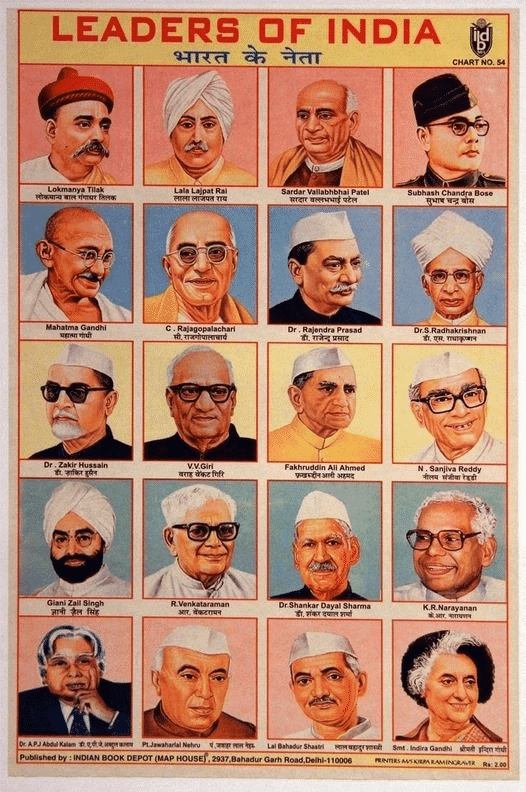
National leaders acknowledged the crucial role that the lower middle classes, peasants, artisans, and workers could play in the national movement. Therefore, they believed it was important to include these groups in the Indian National Congress. Critiquing the Congress for neglecting the peasantry, one leader expressed in the Kesari in early 1897 that lifting the clouds of lethargy and indifference surrounding the peasant was essential for the country’s emancipation. The leader emphasized the need to connect with the peasant, making them feel integral to the nation. Only through this connection would the Government understand the significance of respecting the Congress and, by extension, the Indian Nation, leading to the success of Congress leaders' efforts.
No-Tax Campaign
- To achieve this goal, he initiated a no-tax campaign in Maharashtra during 1896-97, with the support of young workers from the Poona Sarvajanik Sabha.
- He referred to the official famine code, which he had printed in Marathi and distributed widely, urging famine-stricken peasants to stop paying land revenue if their crops had failed.
Plague Outbreak
- In 1897, a plague outbreak in Poona prompted the Government to implement strict measures such as segregation and house searches.
- Unlike many leaders, Tilak chose to stay in Poona, supported the Government's efforts, and organized his own measures to combat the plague.
- However, he also criticized the harsh and uncaring manner in which officials handled the situation.
- Public outrage over the official response to the plague contributed to the assassination of Rand, the Chairman of the Plague Committee in Poona, and Lt. Ayerst by the Chaphekar brothers on 27 June 1898.
Rising Discontent
- The discontent was not solely about the anti-plague measures. Since 1894, there had been increasing anger towards the Government due to its tariff, currency, and famine policies.
- A militant trend among nationalists was emerging, and negative comments about the Government were appearing in the Press.
- The Government aimed to suppress this movement and punish the Press.
- During this time, Tilak had gained recognition in Maharashtra as a militant nationalist and a critical journalist.
- The Government looked for an opportunity to make an example of him, and the Rand murder case provided that chance.
- The British-owned Press and the bureaucracy portrayed the Rand murder as a conspiracy by the Poona Brahmins led by Tilak.
- They investigated the possibility of linking Tilak directly to Rand’s assassination but found no evidence.
- Furthermore, Tilak had condemned the assassination, calling it the act of a fanatic, while continuing to criticize the Government.
- He asserted that it was the Press's duty to expose the unfair situation and educate people about defending their rights.
Arrest and Trial
- As a result, the Government decided to arrest Tilak under Section 124A of the Indian Penal Code for sedition, which involved spreading discontent and hatred against the Government.
- Tilak was arrested on 27 July 1908 and tried before Justice Strachey and a jury consisting of six Europeans and three Indians.
- The charges against him were based on a publication in the Kesar dated 15 June, featuring a poem titled ‘Shivaji’s Utterances,’ which was recited by a young man at the Shivaji Festival, and a speech Tilak made at the Festival defending Shivaji’s actions against Afzal Khan.
- In ‘Shivaji’s Utterances,’ the poet portrayed Shivaji waking up in the present and lamenting the state of his country, expressing concerns about foreign oppression and the weakness of local leaders.
Prosecution's Claims
- The prosecution claimed that Tilak’s defense of Shivaji’s killing of Afzal Khan incited violence against British officials.
- They accused Tilak of promoting the idea through his newspaper that the British had no right to remain in India and that any means could be used to expel them.
- Looking back, it is clear that there was some truth to these accusations.
Early Stages of Anti-Colonial Politics
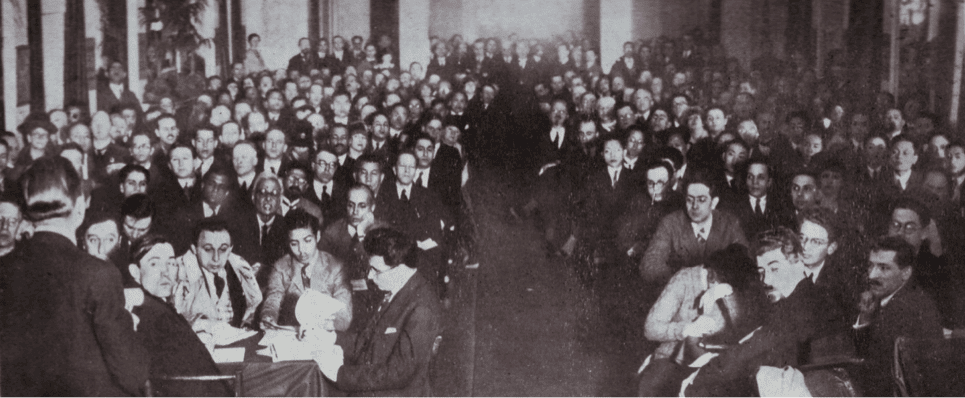
- Politics of Sacrifice: The politics of sacrifice and openly challenging authority were still in their early stages. It was still necessary to claim that anti-colonial activities were being carried out legally.
- Tilak's Denial: Tilak denied the official accusations against him, asserting that he had no intention of promoting discontent against foreign rule.
- Boldness and Sacrifice: Tilak exemplified boldness and sacrifice in his traditional style of confronting the rulers. He recognized that he was starting a new kind of politics that needed the trust of the people.
- New Leadership: Tilak aimed to be a new type of leader while avoiding premature radicalism to prevent government repression.
Pressure on Tilak
- Urging to Retract: Some friends urged Tilak to retract his statements and apologise for his remarks.
- Leadership and Character: Tilak responded by stating that his leadership position depended on his character and integrity.
- Government's Intent: He believed that the Government aimed to humiliate the leaders of Poona and that they would not find him to be a weak leader.
- Servants of the People: Tilak reminded his friends that they were all servants of the people and that showing a lack of courage would betray the people's trust.
Judge Strachey’s Verdict
- Biased Remarks: Judge Strachey’s biased remarks to the jury became notorious in legal circles, where he defined disaffection as a lack of affection, implying hatred and disloyalty towards the Government.
- Jury Verdict: The jury delivered a 6 to 3 verdict finding Tilak guilty, with dissent from the Indian jurors.
- Harsh Sentence: The Judge imposed a harsh sentence of eighteen months of rigorous imprisonment on Tilak, despite him being a member of the Bombay Legislative Council at the time.
- Similar Sentences: Other editors in the Bombay Presidency faced similar severe sentences during this period.
National Protests
- Spark of Protests: Tilak’s imprisonment sparked widespread protests across India, uniting various nationalist newspapers and political groups against the attack on civil liberties.
- Black Borders: Many newspapers displayed black borders on their front pages as a sign of protest.
- Special Editions: Some newspapers published special editions praising Tilak as a martyr for press freedom.
- Dadabhai Naoroji's Address: Dadabhai Naoroji addressed Indian residents in London, accusing the Government of using Tsarist methods and warning about the risks of silencing the Press.
Tilak’s Rise in Popularity
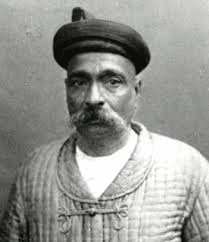
- Rapid Recognition: Tilak quickly gained recognition as a leader across India, earning the title of Lokamanya, meaning "respected by the people."
- Symbol of Sacrifice: He became a symbol of self-sacrifice and a new kind of leadership in the Indian nationalist movement.
- Praise at Congress Session: At the Indian National Congress session in Amraoti in December 1897, Surendranath Banerjea praised Tilak, saying, "a whole nation is in tears," which prompted the audience to cheer for Tilak.
Amendments to the Penal Code
- Government Amendments: In 1898, the Government amended Section 124A of the Penal Code and introduced Section 153A.
- New Legal Provisions: The amendments made it illegal to show contempt for the Government of India or to incite hatred among different classes.
- Nationwide Protests: These legal changes led to further protests across the country, reflecting widespread discontent with the Government's actions.
Swadeshi and Boycott Movement
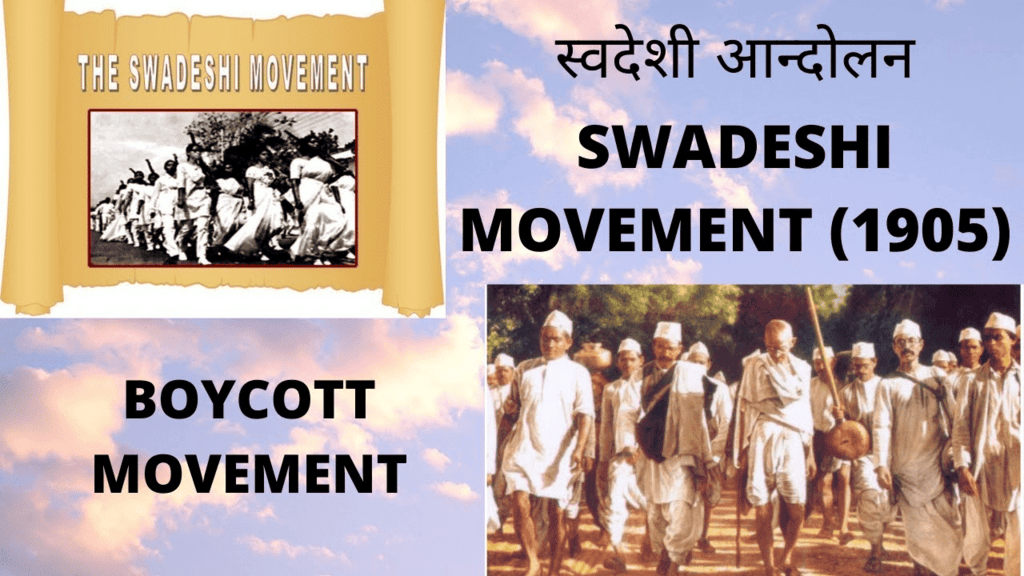
- Repression and Frustration: The Swadeshi and Boycott Movement triggered a new wave of repression in the country, leading to feelings of anger and frustration among the populace.
- Youth Radicalization: This frustration drove the youth of Bengal towards individual terrorism as a response.
- Bomb Attacks: Several bomb attacks on officials occurred in early 1908, reflecting the heightened tension and violence.
- Government Suppression: The Government felt threatened by these developments and targeted newspapers for suppression.
- New Press Laws: New laws were enacted to control the Press, leading to numerous prosecutions against editors and their publications.
- Severe Restrictions: The Press faced severe restrictions and crackdowns during this period, impacting freedom of expression.
Tilak’s Condemnation of Violence
- Government Focus on Tilak: In the tense atmosphere following the Swadeshi and Boycott Movement, the Government focused on Tilak, a prominent figure in the Boycott movement.
- Tilak's Articles: Tilak wrote articles addressing the emergence of the concept of the 'Bomb' in India, discussing the rise of violence and individual killings.
- Condemnation of Violence: He condemned violence and individual killings, emphasizing the negative impact of such actions.
- Critique of Nihilism: Tilak referred to Nihilism as "this poisonous tree," criticizing its harmful influence.
- Government Accountability: While condemning violence, Tilak also held the Government accountable for stifling criticism and dissent, highlighting the need for freedom of expression.
Greater Freedom
In such an atmosphere, he stated that violence, although regrettable, became unavoidable. He expressed in one of his articles: ‘When the official class starts to intimidate the people without reason and when there is an attempt to create despondency among the people through unnecessary fear, then the sound of the bomb naturally informs the authorities that the people have reached a state higher than the dull one where they blindly follow such a repressive policy.’
Tilak's Arrest and Trial
- Once again, on 24 June 1908, Tilak was arrested and charged with sedition for publishing these articles.
- Tilak pleaded not guilty and displayed remarkable courage.
- A friendly police officer warned him of the impending arrest, advising him to take precautions.
- Tilak laughed, stating: ‘The Government has turned the whole nation into a prison, and we are all prisoners. Going to prison simply means moving from a larger cell to a smaller one.’
- In court, he questioned: ‘Tilak or no Tilak is not the issue. The real question is, do you intend as guardians of liberty of the Press to allow as much freedom here in India as is enjoyed by the people of England?’
- The jury found him guilty, with only two Indian members opposing the verdict.
- Tilak responded: ‘There are higher powers that govern the fate of men and nations; perhaps it is the will of Providence that the cause I represent may thrive more through my sufferings than by my remaining free.’
- Justice Davar sentenced him to six years’ transportation, and he was later sent to a prison in Mandalay, Burma.
Public Reaction and Legacy
- The public response was immense, with newspapers vowing to defend the freedom of the Press by following Tilak’s example.
- All markets in Bombay city closed on 22 July, the day his sentence was announced, and remained shut for a week.
- Workers from all textile mills and railway workshops went on strike for six days.
- Attempts to force them back to work resulted in clashes with the police.
- The army was deployed, and at the end of the conflict, sixteen workers were killed, with nearly fifty others seriously injured.
- Lenin praised this as the beginning of the Indian working class's involvement in politics.
- The echoes of Tilak’s trial were heard again in another court when Gandhiji, his political successor, was tried in 1922 for the same offence of sedition under the same Section 124A.
- When the judge mentioned that his crime was similar to Tilak’s and imposed a six-year sentence, Gandhiji replied: ‘Since you have honoured me by recalling the trial of the late Lokamanya Bal Gangadhar Tilak, I consider it my proudest privilege to be associated with his name.’
- The only difference was that Gandhiji pleaded guilty to the charges, indicating how much the national movement had progressed since 1908.
- Tilak’s influence on this change in politics and journalism was significant.
|
173 videos|574 docs|148 tests
|
FAQs on Bipan Chandra Summary: The Fight to Secure Press Freedom - PSIR Optional for UPSC
| 1. What role did newspapers play in fostering political consciousness in 19th century India? |  |
| 2. How did the introduction of new newspapers in the 1870s influence India's nationalist movement? |  |
| 3. Who were some prominent national leaders that emerged during the 19th century, and how did they utilize the press? |  |
| 4. What was Judge Strachey’s verdict, and how did it impact the Indian press? |  |
| 5. How did the Swadeshi and Boycott Movement reflect the growing nationalism in India? |  |















